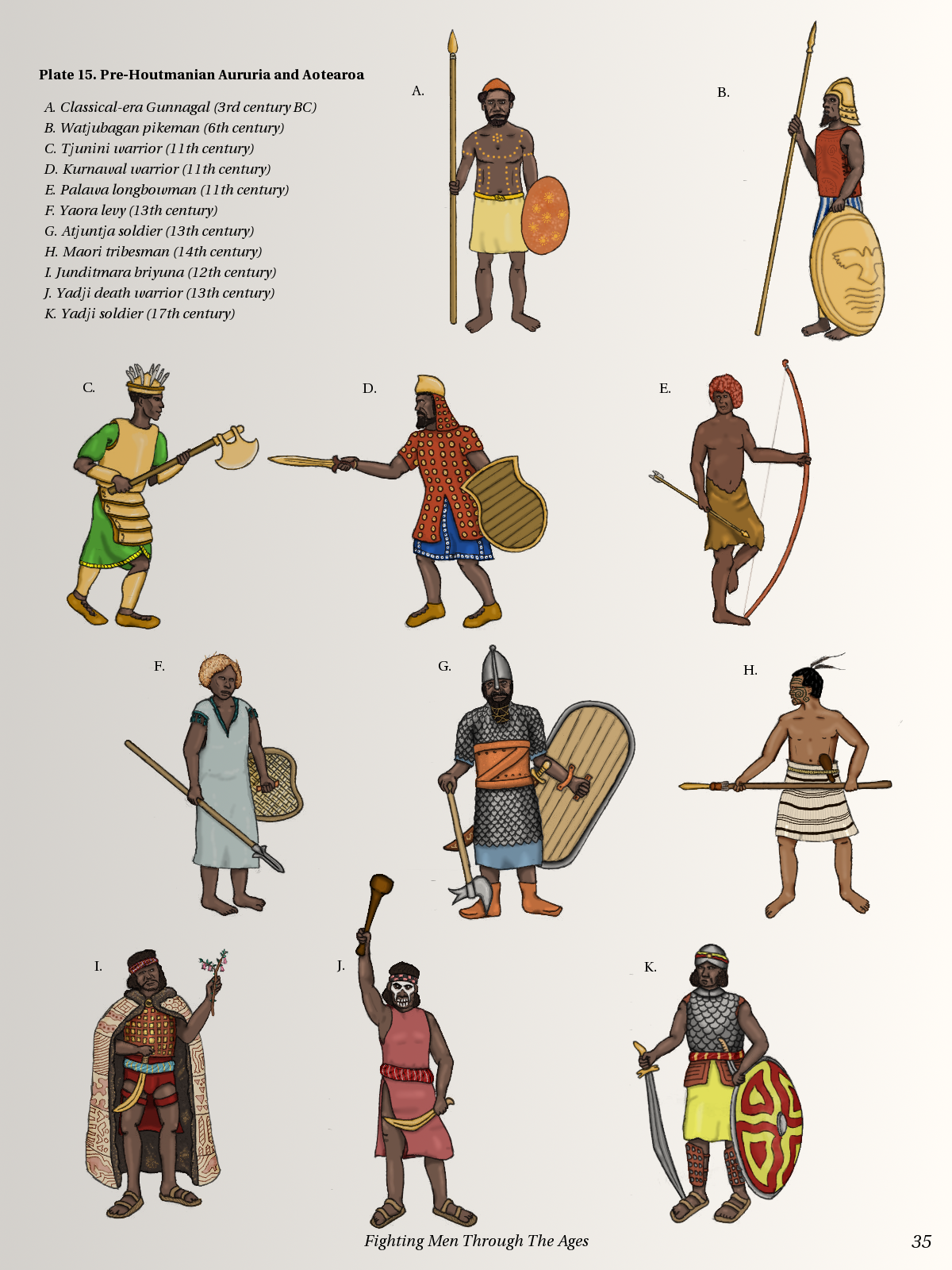In a past two weeks or so, I've sent Jared many illustrations of weapon designs that might fit in LoR&G to get them vetted by him. I'm going to post them here along with my description of them. If you want more information as per it's context in LoR&G universe such as for how long, exactly where was it used, by how many cultures, then you might ask Jared about that, since I don't know the LoR&G continuity that well to decide that myself.
I'm going to start in chronological order, by the time these weapons were used, and as such we start with the bronze weapons:
Early Period Bronze Sword:
This is a sword with a 2 ft. blade, weighted towards cutting. This is a common and archetypal Aururian sword design, and we shall see swords of the same shape appear in steel when iron is available. This form of sword is usually cast in one piece and the handle consists of carved pieces of hardwood attached to the hilt.
The edge is commonly cold-hardened, in that they're hammered, using special guides and tools, to a thin wafer, and that's harder than the rest of the sword. There may even be examples of swords cast using a special technique which uses higher tin bronze on the edge of the sword while using lower tin bronze on the flat of the sword, leading to a hard edge, and soft back.
Early Period Bronze "Halberd" :
This "halberd" is a common infantry weapon and combines the spear with a pick. The overall weapon is perhaps 5 ft. in length and is usually utilized by anti-formation troops, due to how versatile this pole-arm is. The pick can be used for downwards swinging, piercing blows. It can also be used to pull down shields, parry swords and redirect spear thrusts, opening up the opponent to a deadly thrusting attack.
Bronzen Maori Taiaha:
I made two designs for this weapon. Since I didn't know the specifics of the dissemination of bronze casting technology amongst the Maori, so I kept in mind two possibilities; that they learned to and cast bronze blades by their own, they traded for bronze blades with Aururians. These are early weapons, so it is a bit before Maori warfare and equipment, or their martial arts, properly adjusted to the introduction of metal weapons, so what we see here are traditional weapons with bronze introduced in there. Most probably it wouldn't be long before adaptations were made, like armour.
This first taiaha is based on the assumption that the Maori do cast bronze blades on their own, and so this has a bronze "tongue" that is a cutting blade, but blunt on the tip. It's quite a bit longer than the tongues on traditional wooden taiahas.
This second taiaha is based on the assumption that the Maori do not cast bronze blades on their own, and instead trade for them. So what we see here is actually an Aururian bronze dagger blade that's been hafted onto a taiaha.
Death Warrior Helmet:
Not a weapon per-se, this is a helmet that could probably have been used by the earliest death warriors in battle in order to present a fierce and macabre image to their enemies to maximize their shock and awe capabilities.
The helmet is carved from a hardwood and painted white and black and is in the form of a large skull. The closest reference for what it'd look like in form and function would be Mesoamerican helmets, the ones utilized by Jaguar and Eagle knights for example.
The opening would be big enough for most of the face to show through.
Aururian Steel Sword:
A common design of sword, built to specialize as a cutting sword. Usually used by infantry along with a shield. About 2.7 ft in length and has a one-handed hardwood handle.
Aururian Longsword:
This is a specialized anti-infantry and anti-formation sword is nearly 4 feet long, having a two-handed grip. This would be used by fast moving elite troops to break into formations and cut their way through, this could also break through formations of spear or pikemen by cutting off the points of the weapons or damaging them greatly.
Battleaxe:
This form of battleaxe would be common in Atjuntja around the 13th century. Elements include the spike on the top and the small bit behind the blade. The spike could be used to thrust into enemies after their weapon or shields has been pulled away or caught between the main blade or the bit.











